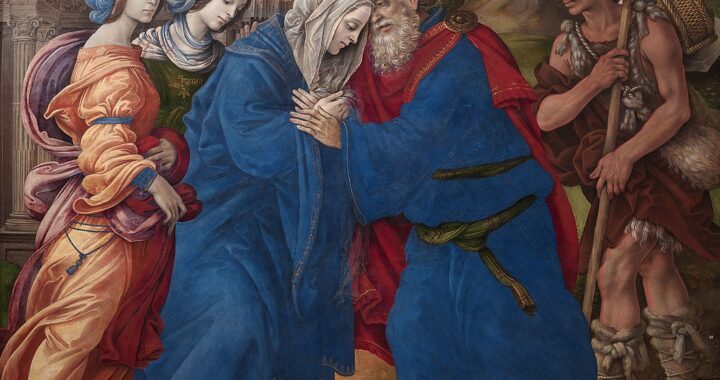
Giovanni Bellini, CC0, via Wikimedia Commons
Who exactly do we remember on All Saints’ Day?
The official liturgical calendar of the Church, the Martyrologium Romanum, says that the Solemnity of All Saints commemorates all the saints who are in Heaven with Jesus Christ. The Martyrologium Romanum also reminds us that, even though we are still pilgrims on earth, some human beings are already in glory with God and all the angels. These men, women and children not only encourage us by the way they lived their lives, but they protect us with their prayers from Heaven.
Those holy people obviously include the saints we celebrate on other days of the Church’s calendar, and that list includes men, women, and children whose names are known only to God. But there are also several lesser-known saints who are celebrated on November 1 in the Church’s liturgical calendar, typically celebrated on that date because that’s the date that they passed away.
Interestingly, five saints on the calendar on All Saints’ Day provide a snapshot of Church history, as well as a reminder of what it takes to become a saint.
On practically any date of the calendar, the Church celebrates the death of a martyr from the early Church. Until the Roman emperor Constantine the Great permitted the practice of the Catholic faith in the Roman empire, persecution caused the death of many Christians over a period of almost three hundred years. Saint Caesarius of Terracina is typical of these early martyrs. We don’t know much about him, except for his name and the fact that he was martyred on November 1 of an unknown year in Terracina, Italy.
While the reputation of sanctity among bishops has taken a beating in recent years, saintly bishops are ubiquitous in the Church’s calendar. Magnus of Milan (6th century Italy) is remembered on November 1, one of many Catholic bishops who lived and died such a holy life that his flock began calling him Saint Magnus after his death.
The medieval period produced many men and women who entered religious orders and inspired others with their holiness. Blessed Rainieri Arentino was a Franciscan friar who lived his life in the true spirit of Saint Francis of Assisi; Rainieri was particularly known for his love of poverty and his humility. He died in 1304 in modern Sansepolcro, Italy.
Proving saints from countries other than Italy do exist (unlike the three listed above), Blessed Nuño Álvares Pereira was born in Portugal and became a great general, as well as a husband and a father. But after his wife died, he left it all behind to become a Carmelite friar. He died in 1431 after living happily for many years as a Carmelite.
Blessed Rupert Mayer was born in 1876 in Germany and became a Jesuit priest. In time, he became known all over Germany for the parish missions he preached. During World War I, his bravery in serving his men as a chaplain became legendary; he even lost his left leg during a grenade attack. When Hitler came to power in Germany, Rupert continued to preach repeatedly and fearlessly against Nazism and was therefore repeatedly imprisoned. But he was considered a great German hero, and when he developed heart problems in a concentration camp, the Nazis sent him to be interned in a converted monastery. They were afraid that the famous man would die in the camp and be considered a martyr to the German people. After the Allies defeated Germany and liberated Nazi camps, Rupert was set free and returned to his parish church in Munich. Ever a man of action, he “died with his boots on”; he suffered a stroke while celebrating Mass soon after he was released.
All Saints’ Day is the perfect day to remember the unknown saints in Heaven, but the saints of November 1 also remind us that Heaven is full of real men and women who have given glory to God in the challenges of their own times, places, and cultures. A hundred years from now, what will the life story of a “typical” saint from the twenty-first century look like?
